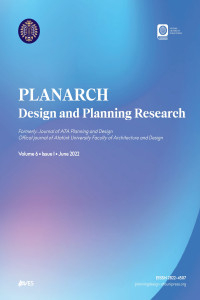THE IMPORTANCE OF ALLOTMENT GARDENS IN THE EUROPEAN GARDEN ART IN TERMS OF URBAN LANDSCAPE AND THE CONCEPT OF ALLOTMENT GARDENS IN TURKISH CITIES
Allotment Gardens (AG) are the lands composed of several small land plots designed together in the sizes of 200 m2 to 400 m2 in general and taken over by individuals or families. The history of these gardens begins in the United Kingdom. Today, function of AG is mainly to serve as not agricultural production areas but recreational and social attraction sites in many European countries especially in Germany, where best practice examples can be seen. Turkish application examples of AGs are given in the present study, which were present several ages ago in many world countries to meet food needs of the poor and then used for recreational aims while today, can increase urban green area rate and shelter organic agricultural productions. As the result of the study, it was seen that Atatürk Forest Farm, Yedikule Bostanları (gardens) taking place in the adjacent of the preservation line involving İstanbul Kara Surları (Istanbul’s Territorial Wall) listed among United Nations Educational Scientific and Cultural Organization (UNESCO)’s World Heritages, Boğazköy Kuzguncuk Bostanı and Diyarbakır City Walls and Hevsel Gardens having entered in UNESCO’s World Heritage List have the same function with AGs as urban agricultural lands for ages in Turkey.
Anahtar Kelimeler:
Allotment Gardens, European Gardens, Urban Landscape, Turkey
___
- Anonymous (2013). Bulletin of Istanbul Branch of Archaeologists Association, September – November 2013, Volume 01.
- Barthel, S., Folke, C., Colding, J. (2010). Social-ecological memory in urban gardens-Retaining the capacity for management of ecosystem services. Global Environmental Change, 20(2): 255–265.
- Drescher, A.W., Holmer, R.J., Laquinta, D.L. (2006). Urban Homegardens and Allotment Gardens for Sustainable Livelihoods: Management Strategies and Insitutional Environments. Tropical Homegardens, 3:317-338.
- Gröning, G., Wolschke-Bulmahn, J. (1995). Von Ackermann bis Ziegelhütte. Ein Jahrhundert Kleingartenkultur in Frankfurt am Main. Studien zur Frankfurter Geschichte. and 36, Frankfurt am Main, Germany.
- Holmer, R. J., Clavejo, M.T., Dongus, S., Drescher, A. (2003). Allotment Gardens for Philippine Cities, UA-Magazine 29-31.
- Kasch, G. (2001). Deutsches Kleingärtnermuseum in Leipzig: Deutschlands Kleingärtner vom 19. zum 21. Jahrhundert. Band 4, Sächsische Landesstelle für Museumswesen, Chemnitz, Germany.
- Koca, A. (2014). Why do surviving two vegetable gardens in Istanbul want to be destroyed? Structure 386, 58-63.
- Macnair, E. (2002). The Garden City Handbook: How to Create and Protect Community Gardens in Greater Victoria. Polis Project on Ecological Governance. University of Victoria, Victoria BC, Canada.
- Tei, F., Benincase, P., Farneselli, M., Caprai, M. (2009). Allotment Gardens for Senior Citizens in Italy: Current Status And Technical Proposals, II International Conference on Landscape and Urban Horticulture
- URL-1 (2017). Kent Düşleri 9. Atatürk Orman Çiftliği Alanları Değerlendirme Projesi. http://www.mimarlarodasiankara.org
- URL-2 (2016). Historical Yedikule Vegetable Gardens. http://yedikulebostanlari.tumblr.com/
- URL-3 (2016). URL-3. T.R. Ministry of Culture and Tourism, general Directorate of Cultural Values and Museums, Diyarbakır Fortress and Hevsel Gardens. http://www.kulturvarliklari.gov.tr/TR,44403/diyarbakir-kalesi-ve-hevsel-bahceleri-diyarbakir.html
- URL-4 (2016). The Bells are ringing for Hevsel Gardens! http://www.radikal.com.tr/cevre/canlar-hevsel-bahceleri-icin-caliyor-1234841/
- URL-5 (2016). Garden of Eden. http://www.atlasdergisi.com/kesfet/doga-cografya/cennet-bahcesi-hevsel.html
- Başlangıç: 2022
- Yayıncı: Atatürk Üniversitesi
